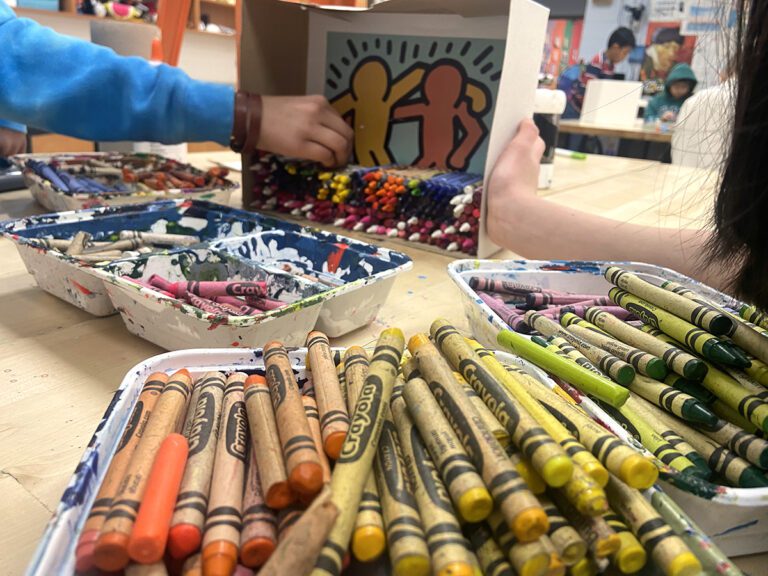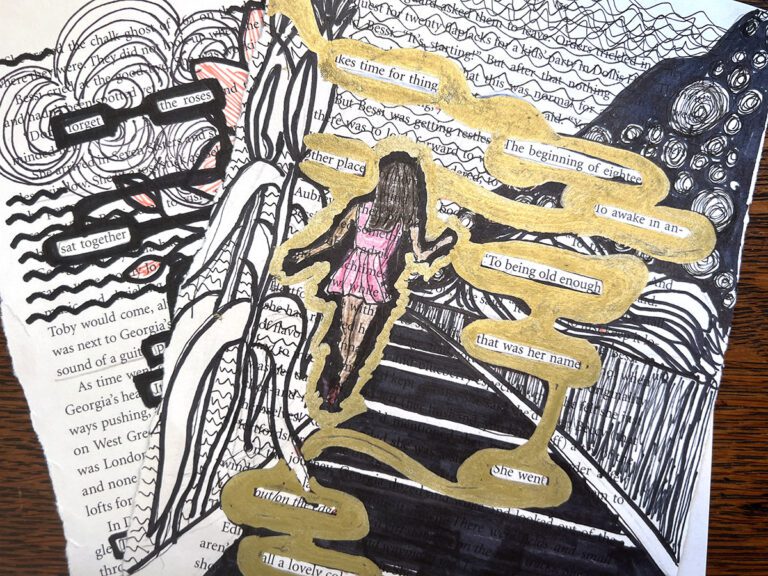Anyone who teaches elementary art knows that students will ask two questions during an introduction to an artist and their work. Though seven-year-olds ask these questions without trepidation, the premise is true for students of any age.
“Are they dead?”
“Do you know them?”
Art educators then begin the dance of what information to share and how to present it in an age-appropriate way. When students ask these questions, they are longing for connection and to break their already preconceived notions of what an artist is or could be. We must introduce students to artists who have left a lasting impression on our collective history and culture. The thing is, we as art educators are the ones selecting and presenting students with artists for study. We should share about the artists we care for personally. Those who we call friends.
Finding Connections in the Curriculum
For years I have engaged first graders in an artmaking process where they learn about the art of Claude Monet and Peter Max. Students work onto photocopies of Claude Monet’s famed bridge paintings with cut paper flowers, bold tempera paint, and oil pastel. The results are always wildly unique and sometimes resemble anything but a bridge. This year, during a presentation of the two artists, I decided on a whim that I needed to share with students how this creative experience connects to the work of my college art professor and mentor, Joanne Stichweh, who worked with collage, bright colors, and art historical references.

I went to the internet to find images of her work, which were extremely limited. I began to tear up right there, realizing that a social media presence had hardly been a concern of hers. But now what? It hit me, as art educators, we have the opportunity to continue the story of those artists who matter most to us as individuals. For the next class, I was prepared with images I collected from mutual friends. I introduced the students to this remarkable artist and friend.
“Wait. You know her?”

I spoke with enthusiasm about who she was as a person, her quiet laugh, her love for cats. She was a person I knew, and the students hung on every word. When they learned she is no longer with us, one student said, “I will tell other people about you one day.” Wow.
Here are more ideas about including practicing artists in your classroom:
Why You Need Visiting Artists in Your Classroom
How to Partner with Community Artists and Why It’s Important
4 Ways Authors Make the Best Visitors in the Art Room
11 Ways to Connect Students to Artists We Know
There are countless ways we can introduce students to artists we know as friends, whether they are still making art or not.
- Hang their artwork in your classroom.
- Include them as the artist of the month on a bulletin board in the hallway.
- Use their work as an example during discussions of material usage.
- Invite them in as a visiting artist. The recent prevalence of video calls makes a class presentation or an interview even easier.
- Invite them to collaborate and make art with your students.
- Include images of them around your room next to more well-known artists like Frida Kahlo and Yayoi Kusama.
- Take artmaking experiences you already have and reimagine how to include your personal artists.
- Add them into the discussion as an example when exploring a theme or specific subject matter.
- Invite these artists to your school art exhibitions.
- Artists may have supplies they are not using and want to donate to your classroom. Tell your students where you got the supplies and how the artist may have used them.
- Listen to music in your class performed by musicians you know—musicians are artists too!

Our students connect to information we share with enthusiasm and heart. They feel along with us. Those personal connections matter and may inspire new generations to see themselves and others around them as artists. Including artists you know personally allows students to connect more deeply with the material, the process, and the people who create. Think about the artists you can include, and don’t be afraid to share them with your students.
What artists do you know personally that you could share with students?
How do you incorporate artists you know into your curriculum?
Magazine articles and podcasts are opinions of professional education contributors and do not necessarily represent the position of the Art of Education University (AOEU) or its academic offerings. Contributors use terms in the way they are most often talked about in the scope of their educational experiences.





